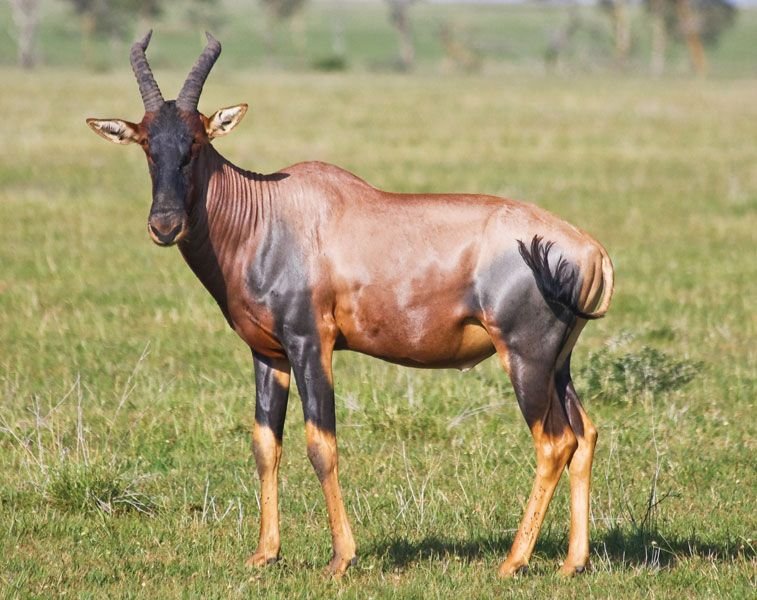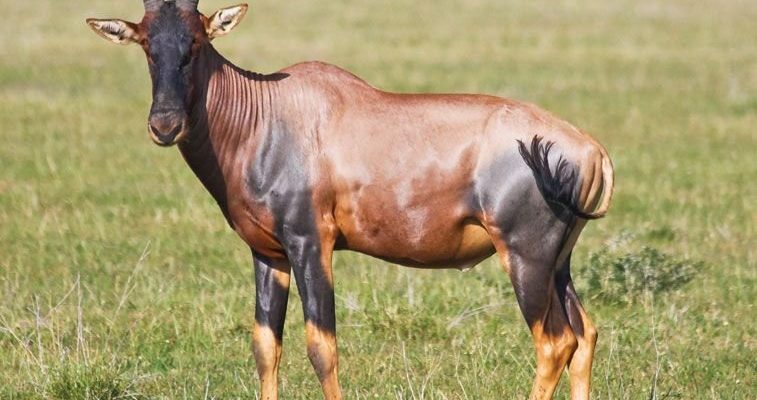
Topis are known for their graceful movements and striking features, including a sleek body and long, slender legs that allow them to navigate their habitats with ease. Found mainly in East Africa, they thrive in open plains and savannahs. But what makes them truly fascinating is how they interact with their environment—shaping landscapes and participating in the life cycles of their ecosystems. So, let’s dive deeper into the various roles that the topi plays and why it matters.
1. Grazers of the Grasslands
Topis primarily feed on grasses, which means they’re *grazers*. They nibble away at the plants, keeping the grasslands healthy and vibrant. By consuming certain types of vegetation, they help prevent overgrowth, which can choke out other plants and reduce biodiversity. You might not realize it, but every bite they take contributes to a greater balance in the ecosystem.
When grass gets too tall or thick, it can hinder the growth of smaller plants. This is where topis come in. Their grazing habits allow for a *diverse range of flora* to flourish. Imagine a neatly trimmed lawn where every type of flower and grass has room to grow. That’s what topis help create in their habitats!
Additionally, by moving through their environment, topis also *disperse seeds*. As they eat plants and move around, they contribute to the spread of various species, helping new plants grow in different areas. This kind of seed dispersion is crucial for maintaining healthy ecosystems and promoting genetic diversity among plant populations.
2. Prey for Predators
In the circle of life, every creature has a role, and for the topi, that includes being prey. They are an important food source for predators like lions, cheetahs, and hyenas. This relationship is vital for maintaining predator populations. Without topis, these predators would struggle to find food, which could lead to declines in their numbers.
You might be wondering why this matters. Well, the health of predator populations can have a *ripple effect* on the entire ecosystem. For instance, if predators become too numerous due to an overabundance of prey, they may overhunt, causing declines in prey species and altering the balance further down the food chain.
Plus, when topis are present, they help regulate the populations of certain plant species. By being part of this food web, they indirectly support the health of their grassland habitats. Without this dynamic balance, the ecosystem could become unstable and less resilient to changes, whether from climate shifts or human activity.
3. Social Structures and Group Dynamics
Topis are known for their interesting social structures. They often live in groups or herds, which can vary in size from small family units to larger aggregations during certain seasons. Being social animals comes with advantages, especially when it comes to protection against predators.
In a herd, individuals can watch out for each other. When one topi spots a potential threat, it can alert the others. This sense of community not only helps them stay safe but also fosters a *stronger gene pool*. By interacting and breeding within their groups, topis maintain genetic diversity, which is crucial for adapting to changing environmental conditions.
You could think of their social behavior as akin to a *neighborhood watch* program—everyone looks out for one another, ensuring that they all stay safe. When animals like topis live in groups, they create a more stable and resilient population, which contributes to the overall health of their ecosystem.
4. Nutrient Cycling
Another significant role of topis is their part in nutrient cycling. As they graze, they not only consume vegetation but also produce waste. This waste, rich in nutrients, returns valuable materials to the soil, promoting plant growth. It’s nature’s way of recycling.
Healthy soil is the foundation of a thriving ecosystem. When topis roam the grasslands, they contribute to the cycle of nutrients, ensuring that the soil remains fertile. Think about it: the more topis there are, the more they keep the soil *invigorated*. This means more plants can grow, which supports not only their own survival but also provides food for other herbivores and habitats for various organisms.
In essence, topis help create a healthier environment through their grazing and waste production, reinforcing the interconnectedness of life in their ecosystems. This helps sustain not just their population but all the species that share their space.
5. Habitat Formation and Maintenance
Topis are more than just grazers; they also help shape their environments. Their grazing patterns influence the growth and distribution of different plant species. By selectively feeding on certain plants, they can encourage a more diverse habitat.
For example, when topis graze on tall grasses, they allow shorter plants and herbs to flourish, creating a multi-layered habitat. This diversity is crucial for many species, including birds, insects, and other mammals. The presence of various plants provides food and shelter for countless organisms, showcasing how topis indirectly support entire communities of wildlife.
Moreover, their movement through the landscape can create paths that other animals, including smaller mammals and birds, might use. These paths can assist in the movement of species across the landscape, promoting interactions and diversity.
In this way, topis serve as *habitat engineers*, shaping the very landscape they inhabit while fostering a rich tapestry of life around them.
6. Conservation and the Importance of Topis
Understanding the role of topis is increasingly crucial, especially as habitats face threats from human activity and climate change. With their populations declining in certain areas, it’s important to recognize what’s at stake. Protecting topis means safeguarding the entire ecosystem they help maintain.
Conservation efforts focused on topis can lead to broader initiatives that support the health of savannah ecosystems. By working to conserve their habitats, we also protect the myriad of species that rely on the same landscapes for survival.
Here’s the thing: when we focus on preserving keystone species like topis, we’re taking action to ensure the health of the environment as a whole. This includes everything from the plants they graze on to the predators that depend on them. The topi’s role in its ecosystem is like a thread that weaves together a complex tapestry of life.
7. The Future of Topis in Ecosystems
Looking forward, researchers and conservationists are working hard to understand how best to protect topis and their habitats. Awareness is key, and this includes educating communities about the importance of these antelopes. When people understand the topi’s role, they’re more likely to engage in conservation efforts.
Additionally, as climate change and human encroachment alter landscapes, adapting conservation strategies to meet these changes will be crucial. Monitoring topi populations and their health can provide insights into broader environmental changes. The topi can act almost like a *health barometer* for savannah ecosystems, helping us to gauge the state of the environment.
In summary, the topi is much more than just another animal in the wild; it’s a critical component of the ecosystem’s health. By protecting these remarkable creatures, we’re investing in the future of the entire ecosystem.
In conclusion, the role of the topi in its ecosystem is like a delicate dance, where each step affects the rhythm of life all around them. From their grazing habits to their social structures, topis contribute to the health and balance of their environment. As we become more aware of their significance, it’s our responsibility to ensure their survival and the preservation of the ecosystems they help sustain.

